Minecraft Easy Way to Get Ghast Tears
Ghast tears are one of Minecraft's more interesting resources. While they aren't used as widely as something like wood or iron, the uses they do have are very powerful - healing potions and end crystals are both items that can be a massive help in the late game of Minecraft's progression.
Acquiring these tears can be a bother, however. Ghasts are uncommon and difficult to kill, and even in the event you do slay one, the drops often plummet into lava. Fortunately, there is an easier way - like most other things in Minecraft, Ghasts can be farmed, netting you all the Ghast tears you could ask for. Here's how to do it.
What You'll Need
This Ghast farm is a portal-based design, so the main thing you'll need is a lot of obsidian. We'll be using portals that are 21 blocks long and 4 blocks high, so for every portal you want, you'll need 50 obsidian. Note that if you're building a second layer, you can use the top of the first layer's portals as the bottom of the second layer, so only 29 obsidian is required for portals on additional layers. The other main material is building blocks - platforms three blocks wide must be built on either side of each portal, so 126 blocks are required for the first portal, and then a further 63 for each additional one.
You'll also need a few stacks of glass, the usual hoppers and chests, some soul sand, and some wither roses. The roses can be hard to obtain, but trapping a Wither in the correct way and placing something like fish in front of it should get you enough of the deadly flowers in no time.
Starting The Farm
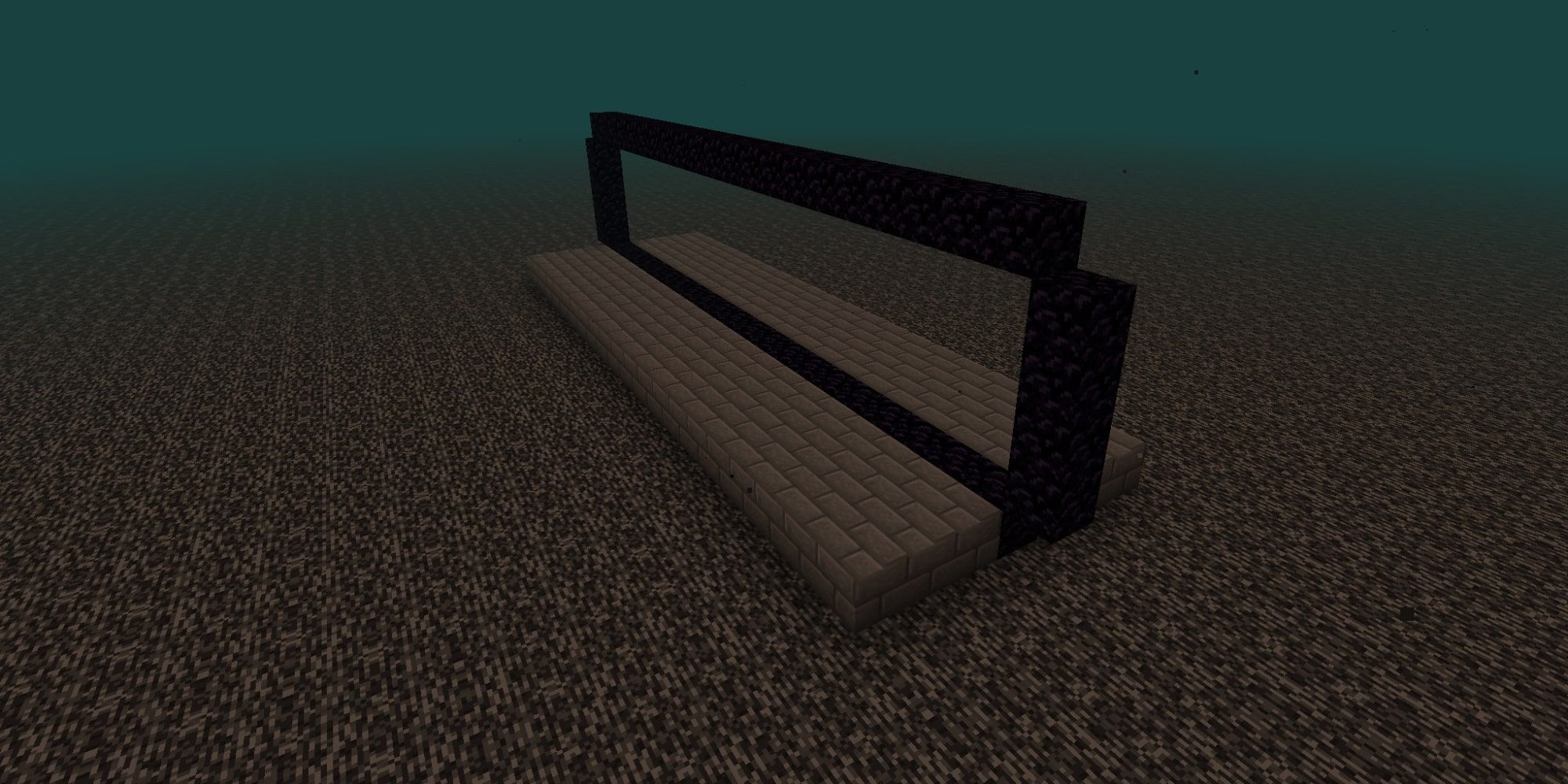
Getting started is fairly simple. You'll need to get onto the Nether roof above a soul sand valley biome, and then you can start placing portals - just make sure you're not close to any existing Nether portals you use to get around. As mentioned above, they should be 21 blocks long and four blocks high, and have three blocks between them, filled in with your building blocks.
This is the perfect amount of space for Ghasts to spawn and immediately go into a portal, and the more portals you have, the more Ghasts you'll get. Don't light the portals yet, however.
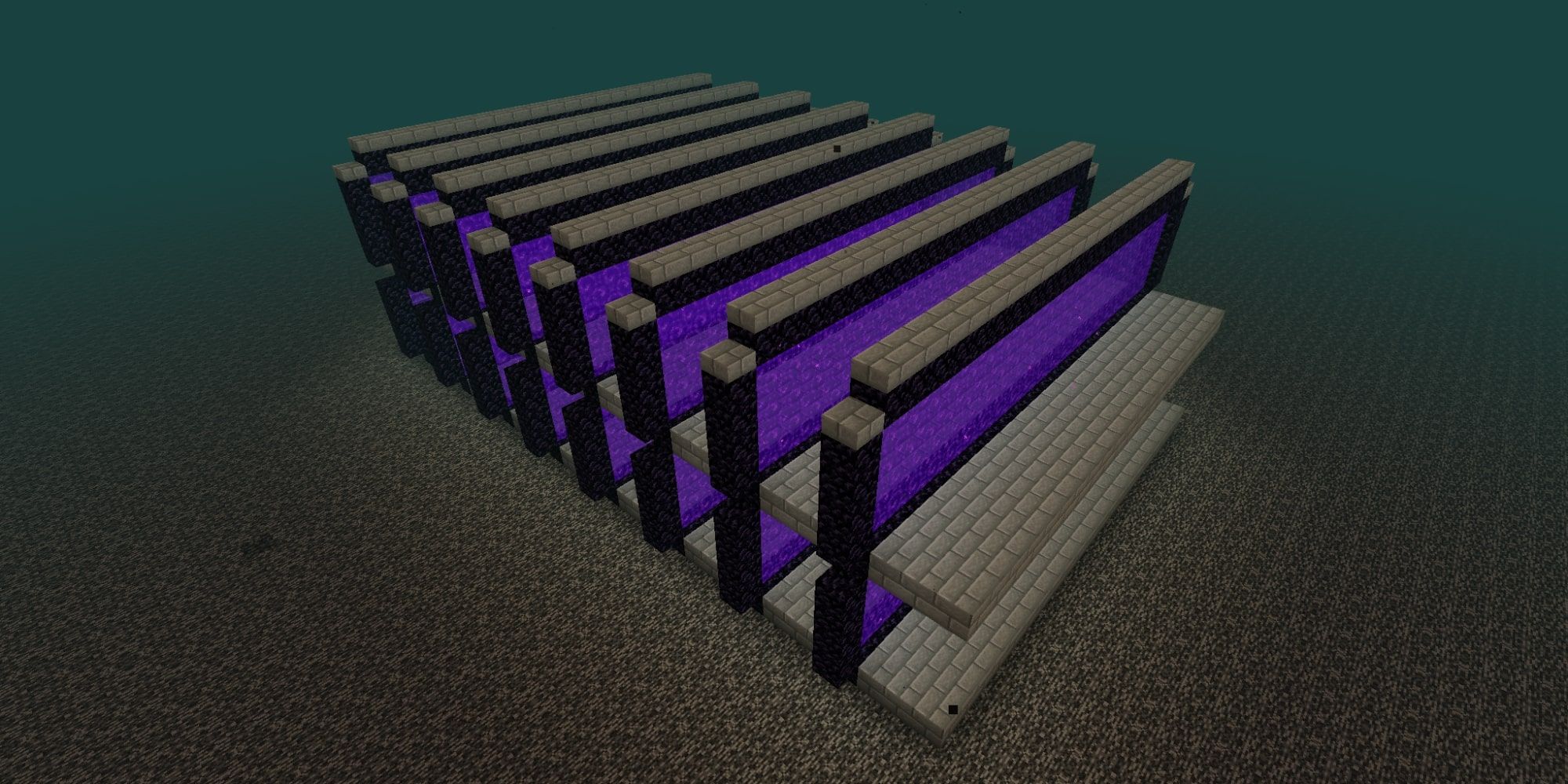
Build however many are right for your situation - the Ghasts you need versus the resources you have - and that's the spawning area done. Just place slabs or some kind of other spawn-proofing on top of the topmost portals, so that the only places things can spawn are on the platforms - this means you don't have to worry about rogue skeletons eating into the mob cap and bringing down your spawning rates.
Linking Up The Portals And Building The Killing Area
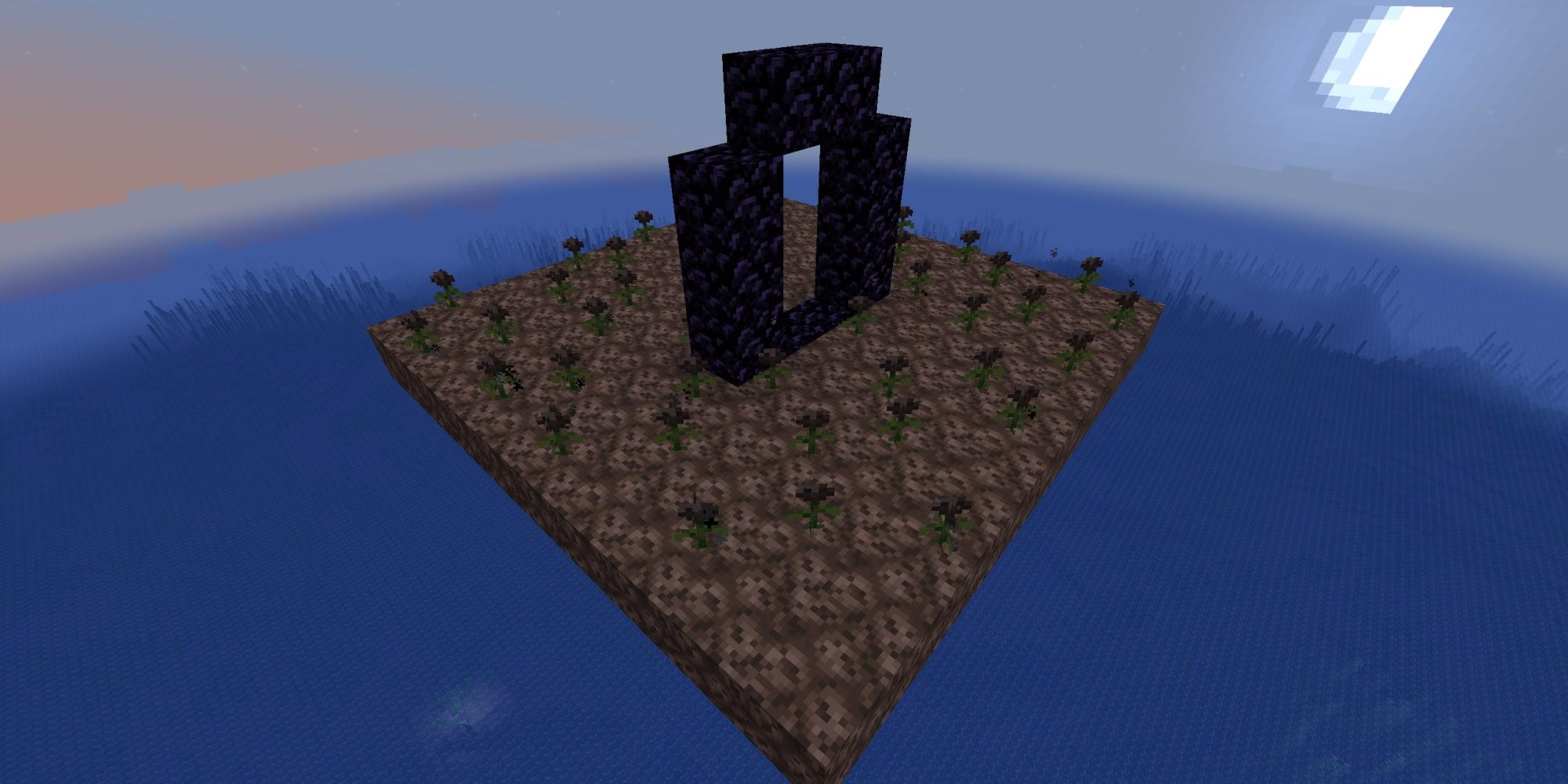
Once all your portals are set up, go to the very center of your farm and take note of your coordinates. Multiply them by eight; this will give you the coordinates to build at in the overworld.
Travel to the coordinates you calculated and build a portal - the usual 2x3 is fine. Light the portal, but don't go through it. Return to the spawning area and light its portals. Traveling through any of them should now result in coming out at the killing area, and if you travel through that portal, you'll come out in the middle of the spawning area.
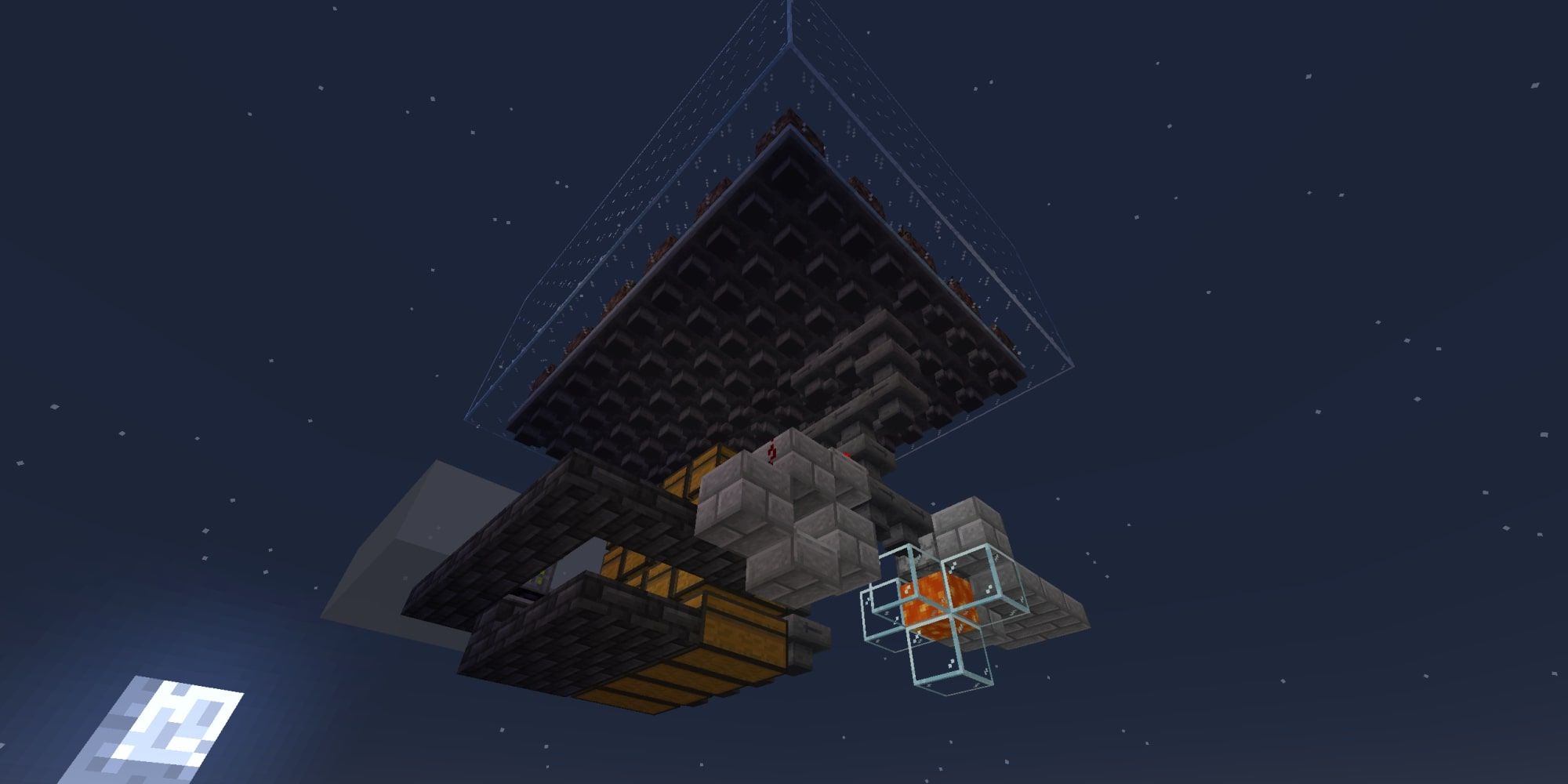
Set up a small platform of soul sand around the farm (around 10x10) and place your Wither roses on the soul sand - these will be what kill the Ghasts.
If you're short on resources, building the sand and roses in strips or a checkerboard pattern will have the same effect while reducing the amount needed. Underneath the soul sand, places hoppers leading to the chests you'll use to collect the drops. Since soul sand is actually slightly shorter than a full block, hoppers can pick up items from on top of it, so no hopper minecarts are required.
Chunks are loaded when something travels through a Nether portal into them, so you won't need to be at the overworld part of the farm for Ghasts to die. The area will load when they travel through the portal, meaning they can be killed and have their drops collected without you being nearby.
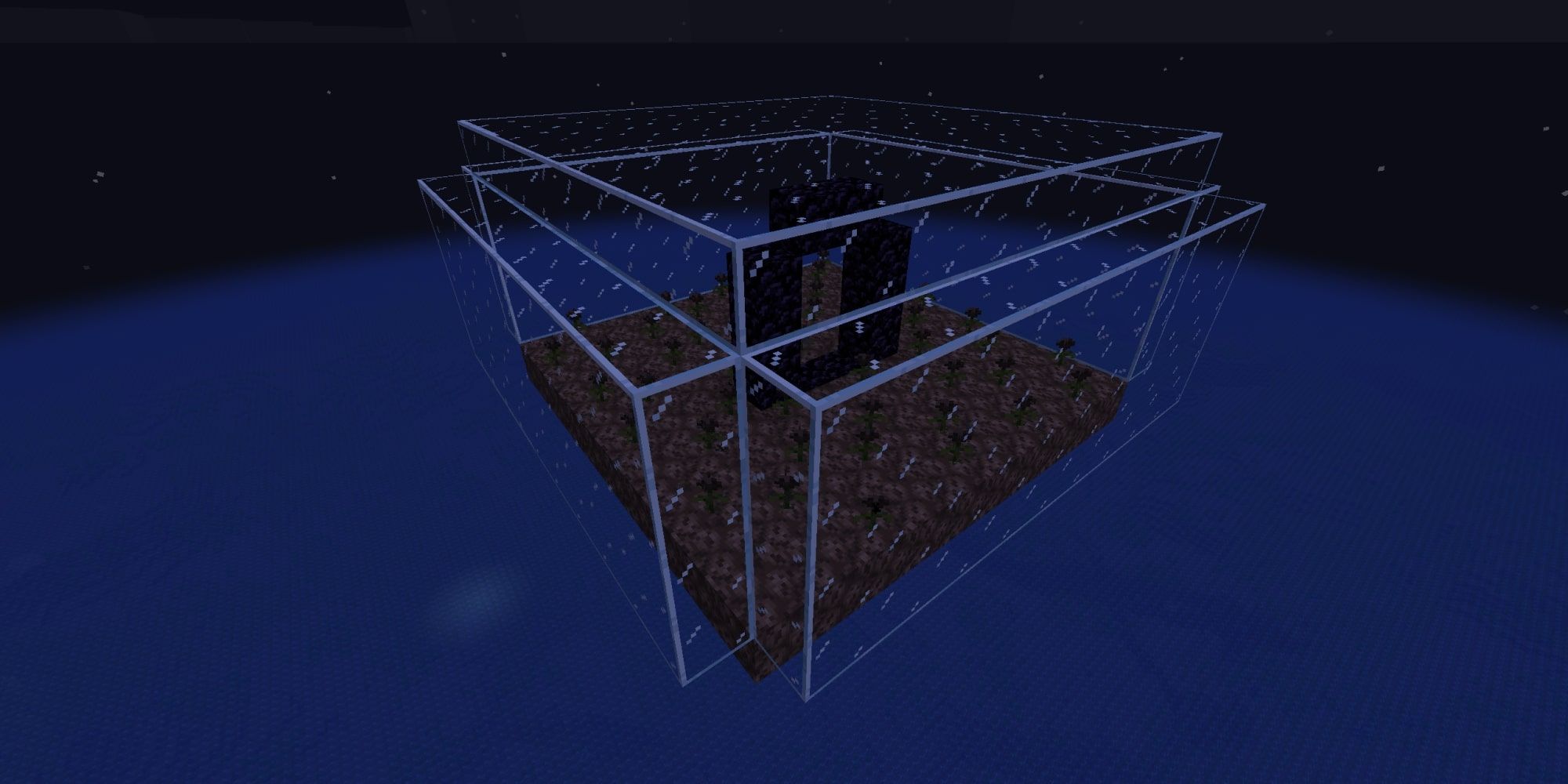
Surround the platform with glass to keep the Ghasts from getting out and that's the killing area finished. You can add auto-sorting to separate the Ghast tears from the gunpowder if you feel like taking your farm to the next level, but a few regular chests should work just fine.
Setting Up The AFK Spot And Using The Farm

As alluded to above, Minecraft spawns hostile mobs using a mob cap system, meaning that at any given time, only a finite number of mobs can exist. Such mobs can exist within a sphere around the player, in a radius of 128 blocks. If you were to just sit in a random spot within the Nether, the mob cap would quickly fill up from mobs spawning all over the dimension's biomes around you.
This is why the Nether roof is used for Ghast farming (and many other Nether farms). If you sit around 128 blocks above the farm, it will be the only place within that sphere around you where mobs can spawn, meaning you don't have to worry about ordinary Nether spawns taking up the mob cap and reducing the total number of Ghasts that can potentially spawn in your farm.
What you need to do, then, is build up from the middle of your farm to around Y-level 235, and build a small platform where you can sit to use the farm. This will get you the best possible rates of consistent Ghast spawns, and everything is taken care of on the overworld side thanks to the aforementioned portal chunk loading.
Once the platform is built, you're finished! To use the farm, simply sit on this platform. Everything will happen automatically, and whenever you're ready to collect your Ghast tears, you can travel to your chest in the overworld and pick them up. Sadly, this farm doesn't work away in the background for you as others do, so you will need to AFK whenever you want Ghast tears, but it doesn't take too long for Ghasts to spawn en masse. After as little as ten minutes, you'll find yourself with more Ghast tears than you could ever obtain from killing Ghasts manually.
Source: https://www.thegamer.com/minecraft-ghast-farm-build-guide-tutorial/
0 Response to "Minecraft Easy Way to Get Ghast Tears"
Enregistrer un commentaire